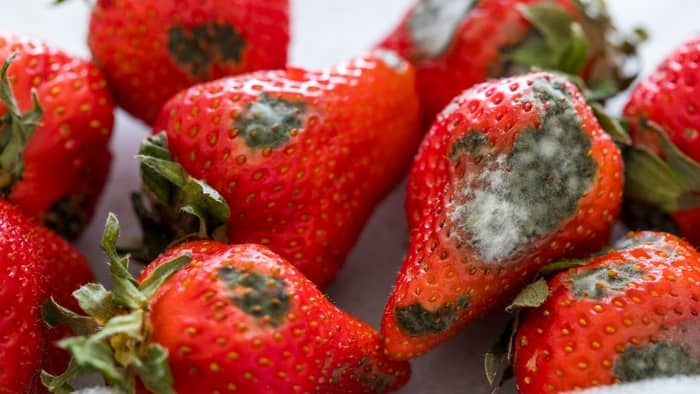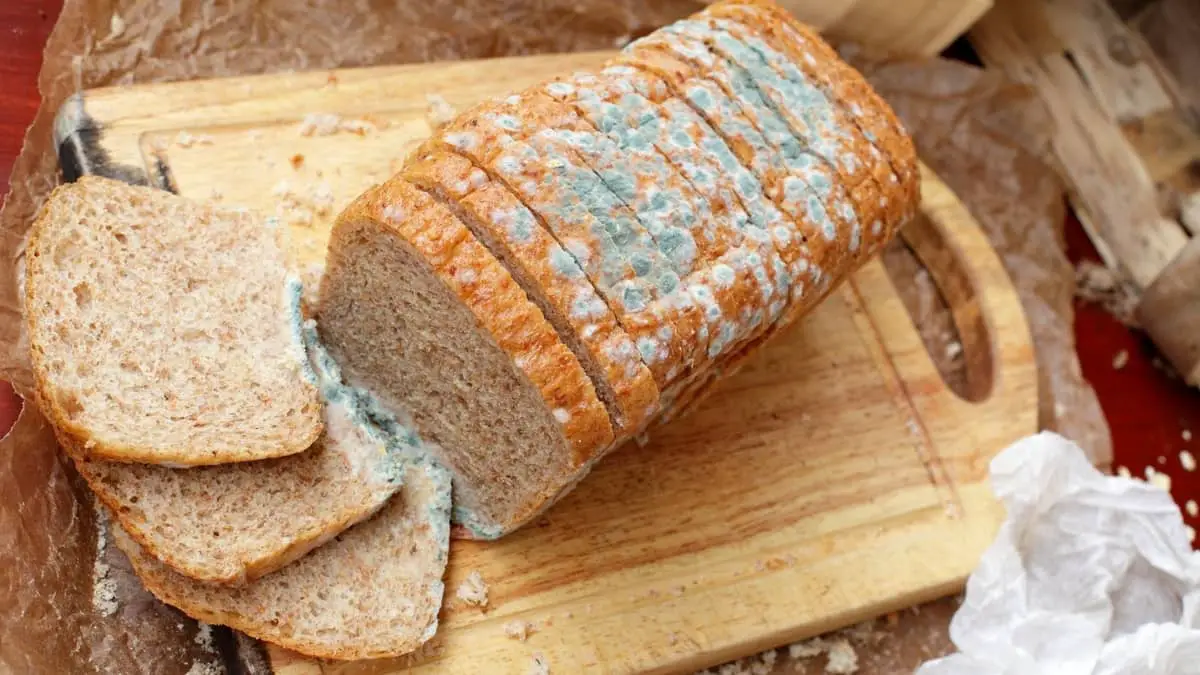Last Updated on March 11, 2022
Bread has been a staple in many people’s diets for thousands of years. It is not only delicious, but it is also a versatile food that comes in many variations, however, it is perishable. So, what happens if you eat moldy bread?
Since bread is perishable, it has a limited shelf life and can go moldy. Sometimes, even with proper storage, bread can go moldy before you even realize it. In this case, you may eat the bread and not realize right away that the bread you are eating has gone bad.
What Is Mold?
Mold is a variety of fungus that grows in multicellular structures known as hyphae. The hyphae create mold spores that can be found both indoors and outdoors.
Mold can grow on many different surfaces, but in order to grow, mold needs moisture. It not only damages what it is growing on, but it also releases tiny spores and byproducts into the air that can cause illness.
There are several different types of mold that grow, some more harmful than others. Oftentimes, the mold you see growing on food will be green, black, or even white and may have a musky or offputting odor. It most commonly grows on fruits, vegetables, cheese, and bread.

What causes bread to mold?
There are several factors that can contribute to mold growth on bread. The three main factors that contribute to mold growth include light, humidity, and heat. With these three factors all in play, it is the perfect environment for mold to grow.
Temperature and moisture contribute the most to mold growing on bread. When moisture gets in a bag of bread, whether from humidity or another source and there is nowhere for it to escape mold begins to form. It requires oxygen and moisture to grow, so if excess moisture becomes trapped in the bag, it is likely only a short time before mold begins to grow, especially if it is in a warm environment.
Then if the bread is sitting in the light, it will begin to spread and quickly grow. Once it starts to grow, it generally quickly spreads through the entire loaf of bread. Though you may be able to catch it before it grows throughout your entire loaf, you will likely have to toss the whole loaf out as it will no longer be good.
What Happens When You Eat Moldy Bread?
If your bread has gone moldy, you should throw it out immediately. Moldy bread is not safe to eat and can make you sick. Even if you notice a small amount of mold, you should still not eat it.
It does not work to scrape the moldy spots off of bread in order to try to salvage it. Even if you can only see a few spots of it, it has microscopic roots that are capable of spreading quickly throughout a slice. This makes it unsafe to eat, as it is not worth the risks.
If you accidentally eat moldy bread you may experience an upset stomach and digestive issues. Some molds can produce a poison called mycotoxins, which can lead to digestive and intestinal problems, potentially altering the makeup of the microbes that are found in your gut. In addition, it can even lead to other illnesses as well, in both humans and animals.
In some cases, consuming mold can cause allergic reactions in people. It is also important to note that inhaling spores can lead to breathing problems, especially for those who suffer from asthma. The people most at risk are children, the elderly, and those who are immune-compromised.
Though uncommon, some people may experience nausea, shortness of breath, increased body temperature, and diarrhea after eating moldy bread. If this occurs, seek medical help immediately, as you may be experiencing an adverse reaction.
How To Prevent Mold On Bread
Though it is not always 100% effective, there are many ways you can help reduce the chance of mold growing your bread. Molding bread can make you sick, so it is important to take all the steps possible to prevent it from happening.
Store Ii cool, dry location
You should store your bread in a cool, dry area away from sunlight. A pantry is a good place to store it, as you generally don’t have to worry about moisture getting in. Store your bread in a bag, airtight container, or bread box to help it stay fresh and dry.
Try to keep your home’s humidity under 40% and keep the temperature under 75 degrees Fahrenheit to help discourage the growth of mold. Be sure to examine your bread before buying it and consume it within three to five days for the best results.
LuvURkitchen Large Bread Box for Kitchen countertop, Cutting Board, and Stainless Steel Bread Knife.
Store in fridge or freezer
If you don’t think you can eat your loaf of bread within three to five days then you can store it in the fridge. With the cool temperatures and low moisture, it is unlikely that it will become moldy and it will help it last for longer.
Freezing bread is also a great option as well. The temperature of a freezer is too cold for mold to grow, so it will keep it safe and fresh. It is a great option to do if you know you will not eat it in time before it goes bad.
To thaw frozen bread, let it sit at room temperature for 30 minutes to one hour. Alternatively, you can also place it in the microwave for a few seconds or toast it in the toaster for a couple of minutes.
No More Bread Mold
If you notice that your bread is moldy, toss it out as it is not worth saving. Eating moldy bread can lead to digestive issues, nausea, diarrhea, shortness of breath, elevated body temperature, and intestinal problems. In addition, inhaling the spores may lead to breathing problems.
Store bread in a cool, dry environment that is out of the sun. Humidity, light, and warm temperatures are the main causes of mold growth, so keep your bread away from those conditions.
Do you have any questions regarding what happens if you eat moldy bread? If so, please ask any questions regarding food and mold in the comment section below.
Read more about Can You Toast Bread In A Microwave?

Ever since she was a young girl, Anna has been a lover of desserts. As an adult, she enjoys
baking a variety of desserts from cakes, cookies, brownies, bread, and more from scratch. She
enjoys sharing her passion for baking with others who also have a sweet tooth. From properly
measuring ingredients to making sure they are the correct temperature, Anna knows the
importance small details can make in baking. She wants to share her experience with others in
hopes they can make the most delicious baked goods. When she’s not busy blogging, Anna
enjoys trying new recipes in the kitchen.


